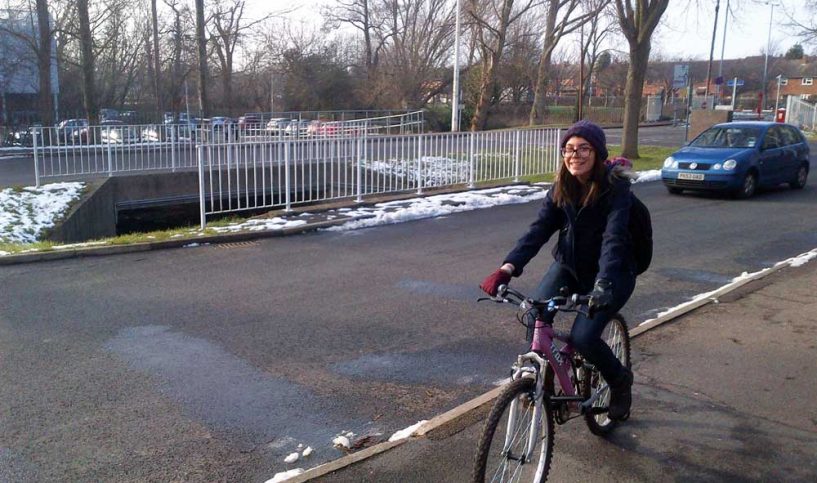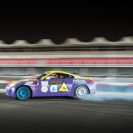Nothing beats the abundance of transport methods in Kuwait. Living there, I never worried about getting from point A to point B – everything was a maximum of 20 minutes from where I lived in Jabriya, the roads were well built, taxis were abundant, family was always ready to drive me around, petrol was cheap and with the exception of Thursday nights, traffic was practically non-existent. Adjusting to no longer having a car, a driver, and a completely different road system that sees people drive on the opposite side of the road is something I’m still struggling with.
Getting to The British School of Kuwait every morning was never a struggle – a mere 7 minutes away, 13 minutes if there was traffic, was nothing compared to the 40 minute walk to my department that I had to undertake every morning of my first semester in England. Whether your chosen destination is a single-campus university or a multiple-campus university is definitely something to take into consideration when making your decision. Single campus universities, like Loughborough, have an amazing family-like atmosphere and you’re bound to run into people you know all the time. The downside; your department might be located at the absolute end of campus, making getting to lectures a trek. Multiple campus universities, like many London universities, have buildings and departments scattered throughout the city, allowing you to choose your accommodation accordingly. As with scattering anything around though, the family-like atmosphere diminishes.
Personally, I have no regrets in choosing a single campus university. Many cities and towns in the West are designed with a transport system that’s friendly to those who don’t own cars. Whether it’s buses, bikes, taxis, or relying on lifts from friends, when there’s a will to get to lectures (and to the neighbouring cities to do some much needed retail therapy), there’s a way.
1- Cycle
I never really understood the phrase “It’s just like riding a bike” until I decided to invest in a bike 3 weeks into my first semester. It had been 10 years since I had ridden a bike, and I was petrified. My bruised and scraped knees and elbows are a testament to how clumsy I am as a person when I just walk. Deciding which bike to buy at first looked like a hard decision; with so many gear options, settings, and features, I was baffled. What I discovered, though, is that bikes are a lot like wands in Harry Potter – you don’t choose them, they choose you. A baby-pink bike was on its own in a corner when it chose me to take it home. Although it took me a good 10 minutes to learn how to balance myself on a bike again, cycling to campus the next day saved me 20 minutes and really worked my thighs.
2- Bus, tram, or subway
Admittedly not the most glamorous mode of transport, buses are certainly one of the quickest, especially if you want to get to a neighbouring city or town. Familiarize yourself with the bus route, approximate transport time, and know when to get off! After forgetting to get off at the right stop on a tram in Geneva, I vowed to never use a tram ever again in my life. Fast-forward two years, and I’ve gone back on my word, but I’m lost again, completely oblivious as to when I should get off.
Keep your bags close to your body at all times, and make sure it’s closed. If you’re wearing a backpack and you’re standing, put it down and between your legs. I can’t count the number of times I’ve been on the subway and noticed people opening other passengers’ zips to stealthily take something out of their bags.
3- Taxi
I take taxis when I’m feeling homesick. Nothing beats a ride with a friendly taxi driver who’s as interested in the origins of your American-British-European sounding accent as you are in his tiny car.
4- Walk
Although the most obvious transport method, it’s also one of the most exhausting, both mentally and physically. Programming your body to walking every day takes time, and taking a break from the whole process whenever you visit home means you’ll have to restart the process all over again. I worked out that running helps aid the whole process – as well as improving your stamina, keeping you warm, and strengthening your legs, it becomes almost an addiction that you continue doing even when you’re back home visiting your family. This way, you won’t have to restart the programming process when you’re back on campus, plus it keeps you fit!
Whatever method you choose to go with, make sure it’s safe. Don’t cycle or walk through alleyways when it’s dark at night, and don’t get in the car with dodgy-looking drivers. Trust your instinct and you’ll be safe. Most importantly, have fun! The adventures of getting off at the wrong stop, cycling into a bush, and walking in the opposite direction may seem frustrating at the time and they might even make you cry, but looking back, they’ll make you smile.
Yara Al Wazir is an activist and student currently based in the UK – her monthly column reflects on her experience of moving away from the familiarity and comfort of Kuwait, to the UK in pursuit of a university degree. Follow her on Twitter @YaraWazir.











